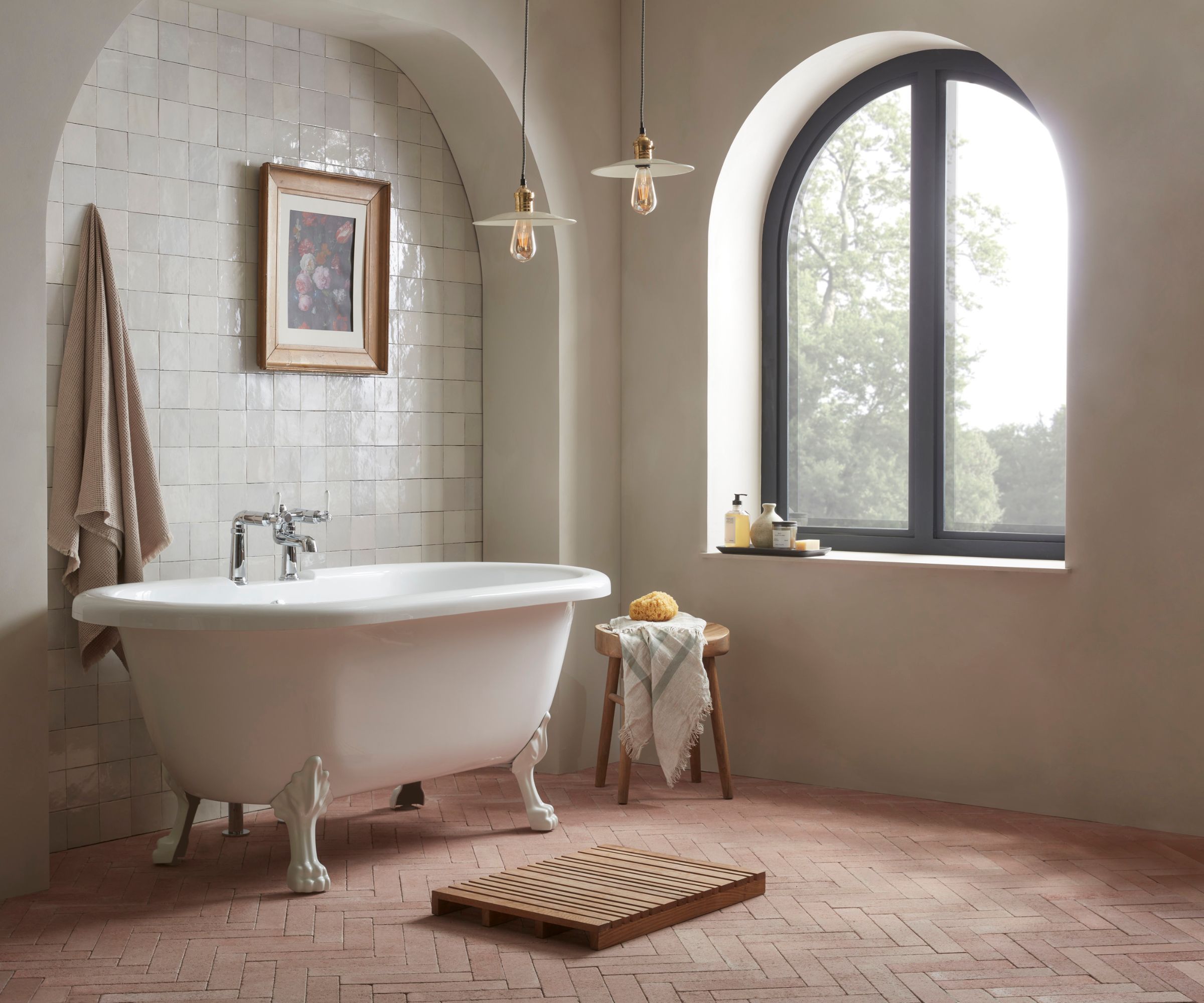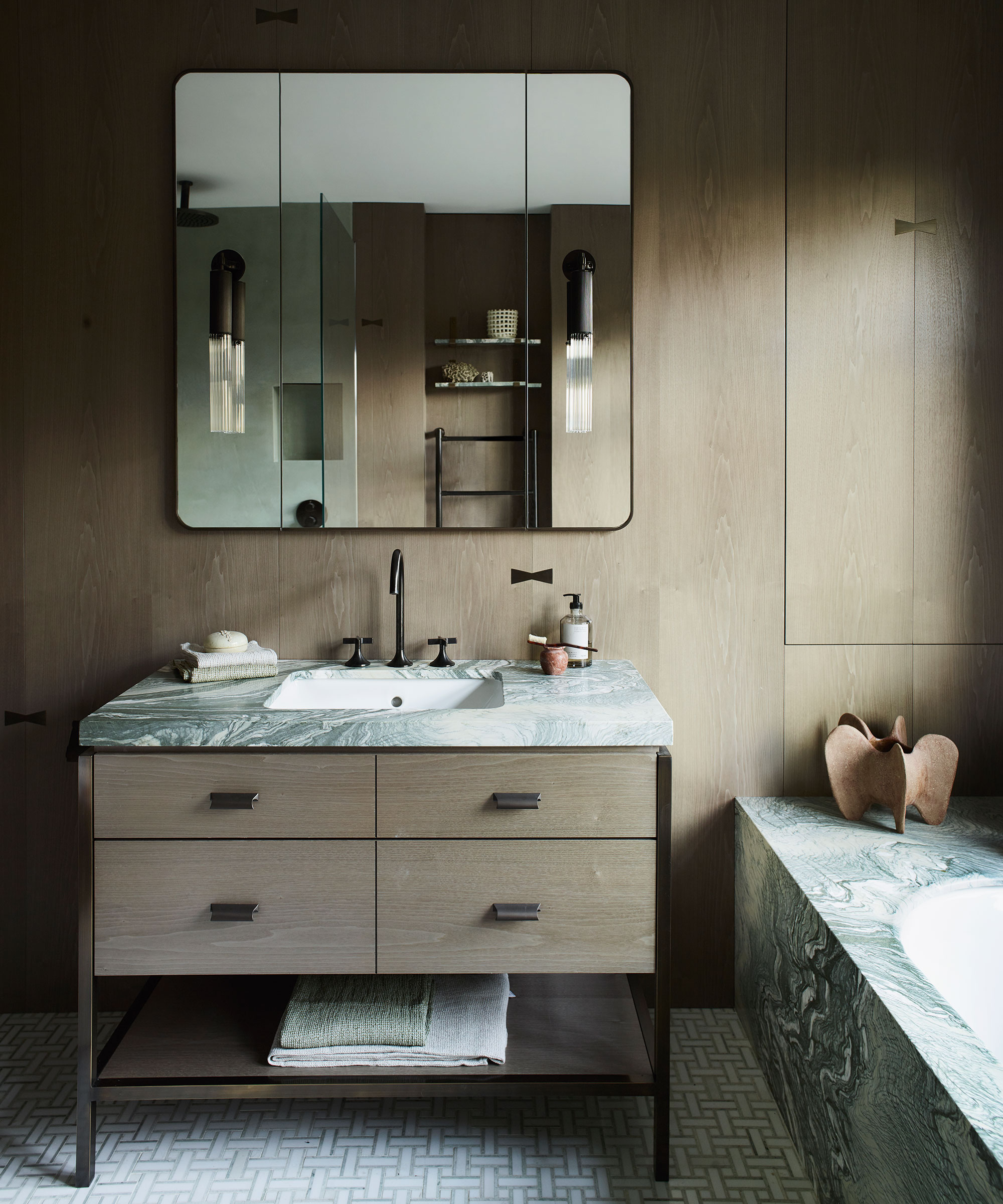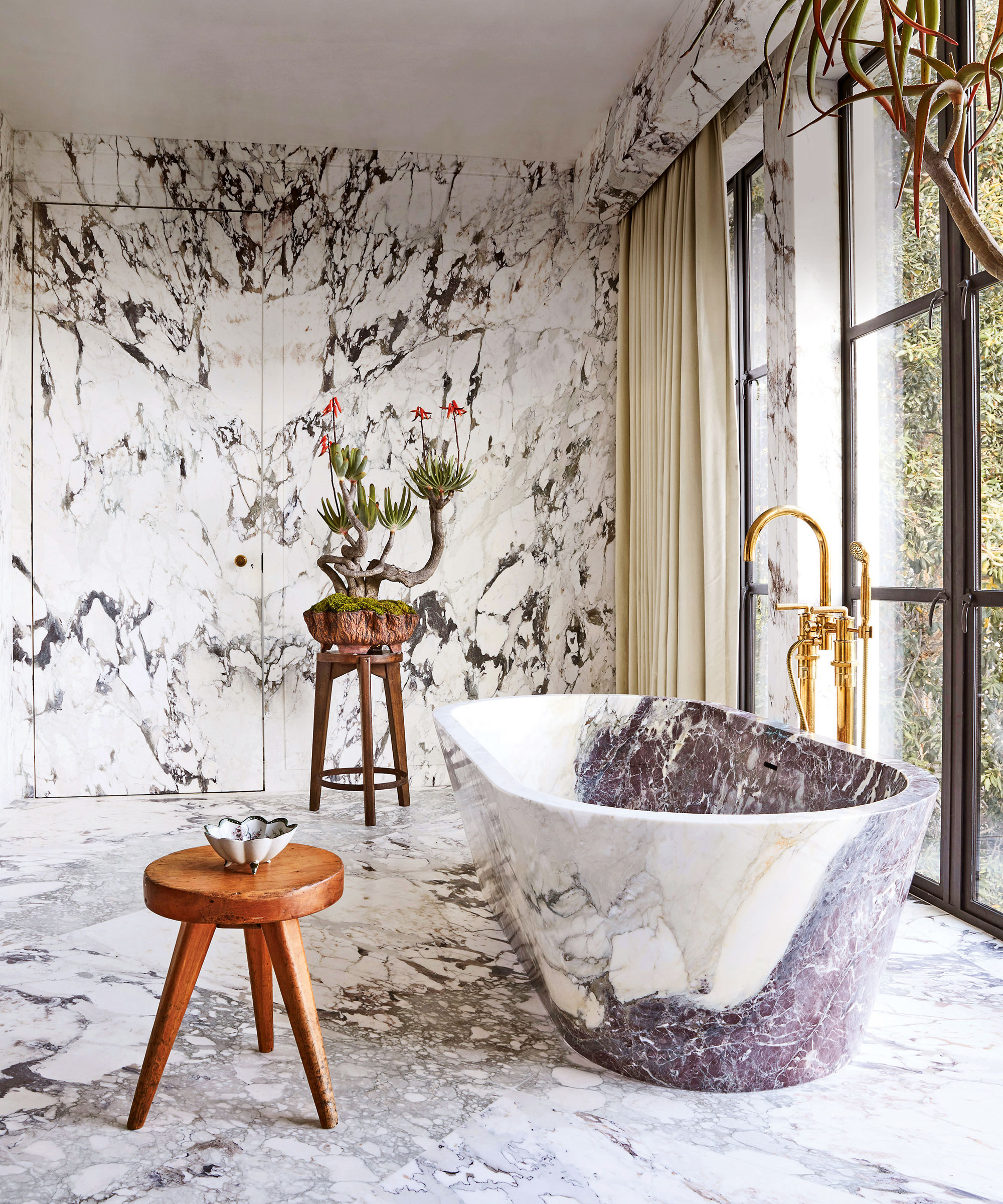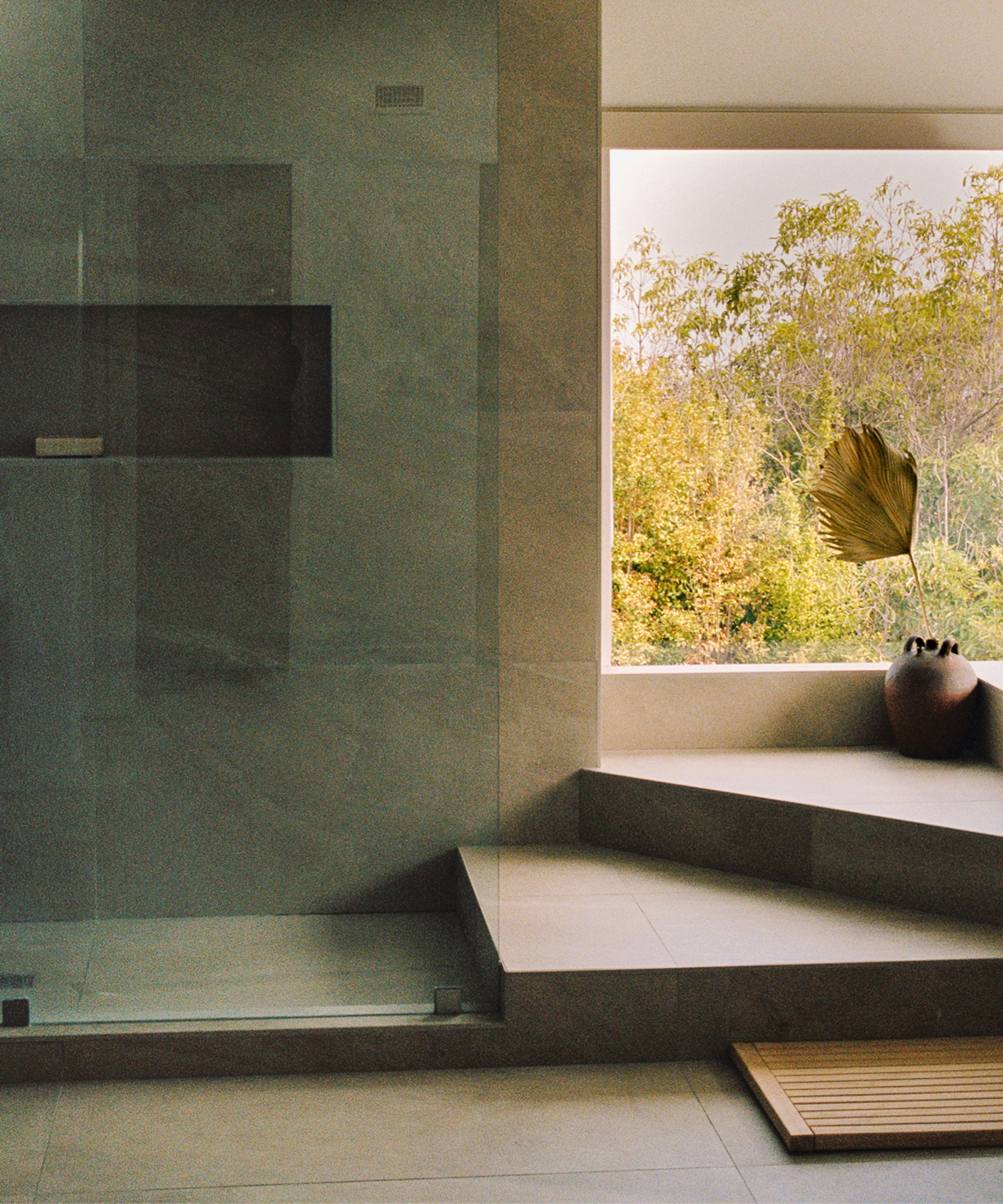5 ways to draft-proof a bathroom – expert tips that you can do yourself
Keep your bathroom draft-free and cozy to create a comfortable environment while saving on heating costs


There's nothing less relaxing than a drafty bathroom, and as the temperature outside drops, draft-proofing your bathroom is key to ensuring inside remains warm and cozy.
Draft-proofing your bathroom can improve comfort, reduce energy consumption, and save on heating costs, but this doesn't have to mean sacrificing style. Whether it's sealing gaps, upgrading windows or adding insulation, these DIY draft-proofing strategies can create a bathroom that is comfortable and remains visually appealing.
Whether you have a small or large bathroom, our professionals have explained how to ensure your bathroom remains draft-free and well insulated year-round, keeping your bathroom warm without heating.
How to draft-proof a bathroom
Before you begin implementing these draft-proofing measures in your bathroom, first check for the source. You can do this on a windy day by scanning your hand around your bathroom to sense for a draft, or test your bathroom for drafts using a candle or an incense stick. Hold it near potential draft areas and look for any signs of air movement indicated by a flickering candle or smoke movement.
1. Seal gaps and cracks

'Drafts could be coming from windows, doors, vents, pipes, or any other gaps or cracks that let cold air in and warm air out,' advises Jacky Chou, principal and director at Archute. To seal any gaps or cracks that are allowing drafts to enter your bathroom, you can use weatherstripping or caulking.
'Weatherstripping is a fundamental element in draft-proofing your bathroom,' says Edward Reay, owner of Build Fanatic. 'To create an effective barrier against drafts, install weatherstripping meticulously along the door frame and window edges.
'The choice of high-quality weatherstrips is paramount for long-lasting performance. Opt for materials such as silicone or rubber, known for their durability and resilience. These materials can withstand the rigors of moisture and temperature fluctuations in a bathroom environment.
Design expertise in your inbox – from inspiring decorating ideas and beautiful celebrity homes to practical gardening advice and shopping round-ups.
'When properly applied, weatherstripping forms a tight seal that prevents cold air from infiltrating your bathroom, contributing to energy efficiency and a more comfortable indoor atmosphere.'
We recommend finding weatherstripping that blends with your bathroom, for example using white weatherstripping on white window frames. You can find silicone weatherstripping at Amazon.

Jacky Chou is the Principal and Director at Archute, an editorial magazine about architecture, home and garden. They have been referenced by The New York Times, Bustle, House & Home, Bloomberg, and Angi. Jacky also his own an online interior design company as well called Laurel & Wolf.

Edward Reay also says: 'Caulking is a vital step in draft-proofing your bathroom. Apply a good quality, waterproof caulk to seal gaps and cracks in the walls, focusing especially on areas near pipes, vents, and electrical outlets.
'It's crucial to ensure that the caulk is allowed to fully cure before any subsequent
painting or finishing work. Proper curing guarantees a long-lasting, airtight seal that prevents drafts and moisture infiltration, which can lead to mold and energy inefficiency.
'High-quality caulking, when professionally applied, is a reliable solution for maintaining the integrity and energy efficiency of your bathroom.' We recommend this clear silicone sealant, caulk gun, and caulking tool kit, from Amazon.
Areas you should seal include applying caulking around the base of your exhaust fan, and weatherstripping windows, and doors, since this will not only reduce drafts but also prevent heat from escaping, making your air conditioning more efficient.
'However, it is important to note that you should not seal bathroom windows completely, as the gaps allow steam to escape and reduce the risk of damp,' warns Shlomo Cherniak at Cherniak Home Services. 'Instead, focus on sealing the inner doors to these rooms to prevent warm air from escaping.'
2. Add insulation

In a bathroom there are many different ways drafts can enter uninsulated spots, which is why knowing where to add insulation can be transformative in creating a warmer bathroom.
'Uninsulated plumbing can be a significant source of drafts in a bathroom,' explains Rich Mullins, interior designer at owner of H2O Plumbing. 'Insulate exposed pipes to prevent cold air from chilling the room.'
'Drafts can enter through electrical outlets and switches on exterior bathroom walls,' says Dave Roebel from Northeast Mechanical Services. 'Install foam gaskets or insulating covers behind outlets and switch plates to reduce drafts.'
You can also replace the insulation around your exhaust fan to reduce the air penetration from outside.
You can also install stylish heavy-duty curtains or blinds to help reduce heat loss through the windows.
3. Install a draft blocker for the exhaust fan

Consider installing a backdraft damper or draft blocker, a practical device that ensures a one-way flow of air to prevent cold air from infiltrating your bathroom through the exhaust system.
This is a flap-like device that opens when the fan is in use and closes when it's not, preventing cold air from entering. We recommend this backdraft damper, from Amazon.
A well-sealed exhaust fan and vent system not only reduces drafts but will also minimize energy wastage, contributing to a more energy-efficient and comfortable bathroom space while avoiding temperature fluctuations and condensation problems.
4. Upgrade windows

As one of the main points through which drafts can enter your bathroom, windows should be reinforced to keep your bathroom warm.
Dave Roebel suggests: 'Consider upgrading your bathroom window if it's old or single-pane. Installing energy-efficient, double-pane windows will not only reduce drafts but also improve insulation and soundproofing.'
In addition, 'For improved insulation and light management in your bathroom, consider the application of window films,' advises Edward Reay. 'These films provide an additional layer of insulation, effectively minimizing heat loss and drafts. They accomplish this without sacrificing the beneficial infusion of natural light into the room.
'By choosing the right window films, you can enjoy the benefits of enhanced privacy and energy efficiency while still basking in the ambiance of a well-illuminated bathroom.
'Window films are a professional solution that combines functionality and aesthetics, making them an excellent addition to your bathroom draft-proofing efforts.' We suggest this clear sticky window glass film, from Walmart.
5. Install a draft stopper

'If there is a noticeable gap under your bathroom door making it drafty, consider using a draft stopper or door sweep to block the airflow,' recommends Rich Mullins. 'In one project, I used a stylish and practical fabric draft stopper that matched the bathroom's color scheme, ensuring it blended seamlessly with the decor.'
You can purchase a draft stopper that fits your door dimensions. We love this NABOWAN weighted under-door draft stopper, from Amazon. Alternatively, you can make your own by sewing a fabric tube and filling it with rice or foam.
FAQs
How to insulate vents in a bathroom?
To insulate vents in a bathroom Jacky Chou, principal and director at Archute advises, 'You can use magnetic vent covers or insulation boards to block them when not in use.
'You can also adjust the thermostat or the fan speed to regulate the airflow and temperature in your bathroom. Use this opportunity to add fragrance to your bathroom by placing scented candles, diffusers, or potpourri near the vents.' These are things people with nice smelling bathrooms always do.
If drafts in your bathroom are persistent, especially in areas with colder climates, you may want to use a small electric space heater in the bathroom during the winter. This can help maintain a comfortable temperature without relying on the central heating system. The heart of your home can also be losing heat, so learn draft proof your kitchen for added comfort.
Ensure safe practices by keeping any electrics away from water and only keeping it on when you are home. We love this Värme portable space heater, from Amazon.

Lola Houlton is a news writer for Homes & Gardens. She has been writing content for Future PLC for the past six years, in particular Homes & Gardens, Real Homes and GardeningEtc. She writes on a broad range of subjects, including practical household advice, recipe articles, and product reviews, working closely with experts in their fields to cover everything from heating to home organization through to house plants. Lola is a graduate, who completed her degree in Psychology at the University of Sussex. She has also spent some time working at the BBC.